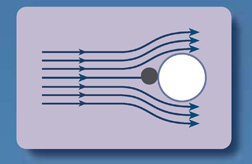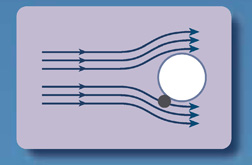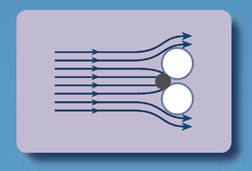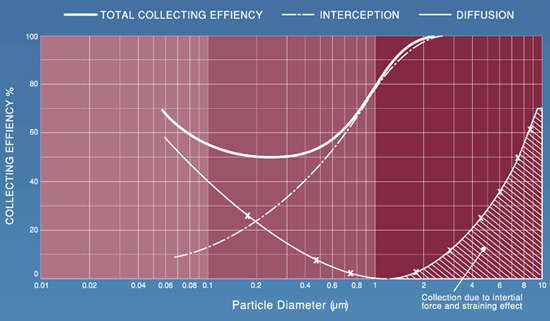Mechanism of Air Filter
Filters have different effects that help to catch dust. These;
•Impingement
•Interception
•Diffusional effect
•Straining
Impingement:
Impingement is the mechanism by which large, high-density particles are captured. As the dust-laden air passes through the filter media, the air tends to pass around the filter fibers. However, due to inertia, the dust particles do not follow the air streamlines around a fiber. Instead, they move straight ahead to collide with the filter fibers to which they become attached.


Interception:
Interception occurs when a dust particle follows the air streamlines, but still comes in contact with the fiber as it passes around it. If the forces of attraction between the fiber and the dust particle are stronger than the tendency of the airflow to dislodge it, the particle will be removed from the air stream.
Diffusional effect:
Diffusional effect explains the capture of very small particles. As the dust-laden air passes through the filter media, minute particles do not precisely follow the streamlines. Instead, they are bombared by air (gas) molecules which cause them to take an erratic path described as Brownian movement. This erratic path increases the probability that particles will come in contact with fibers and will stay attached to them


Straining:
Straining occurs when the smallest dimension of a dust particle is greater than the distance between adjoining filter media fibers. Straining is not an important influence in filtration except in the removal of long-fibered materials such as lint.
As the total collecting efficiency of the filter is the sum of different filtration effects, it is natural to assume that the collecting efficiency has a definite minimum value under certain condition. Both the interception effect and the inertial effect increase with increasing particle size, whereas the diffusion effect decreases. This should therefore imply that there is a definite particle size, which is the hardest to collect in an filter (MPPS). Fig shows the collecting efficiency of both the total and the individual filtration effects in a fine filter with a glass fibre mat. As can be seen from the collecting efficiency curve it has a minimum for particles of 0.15 to 0.3µm diameters.





